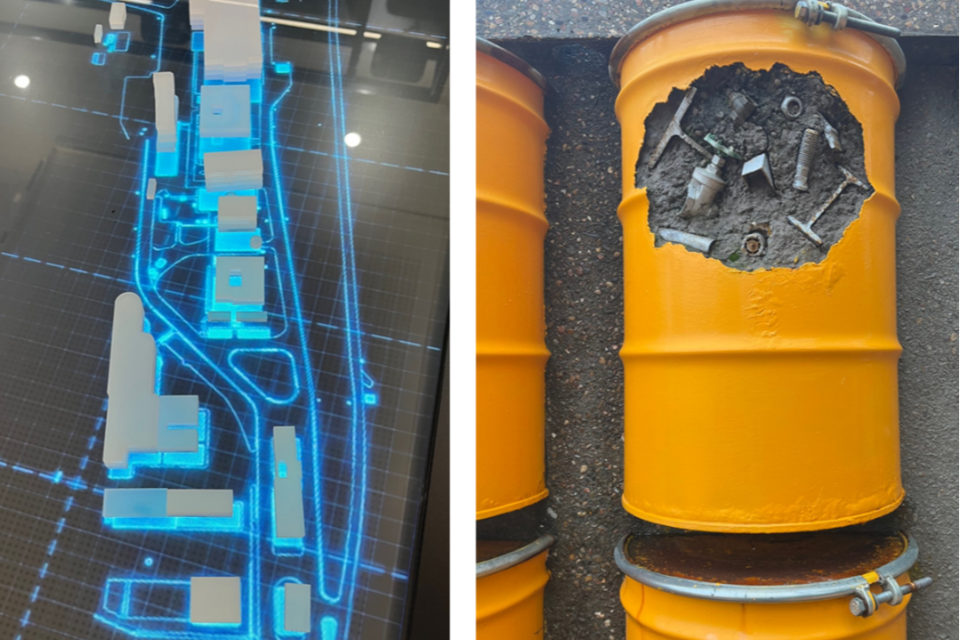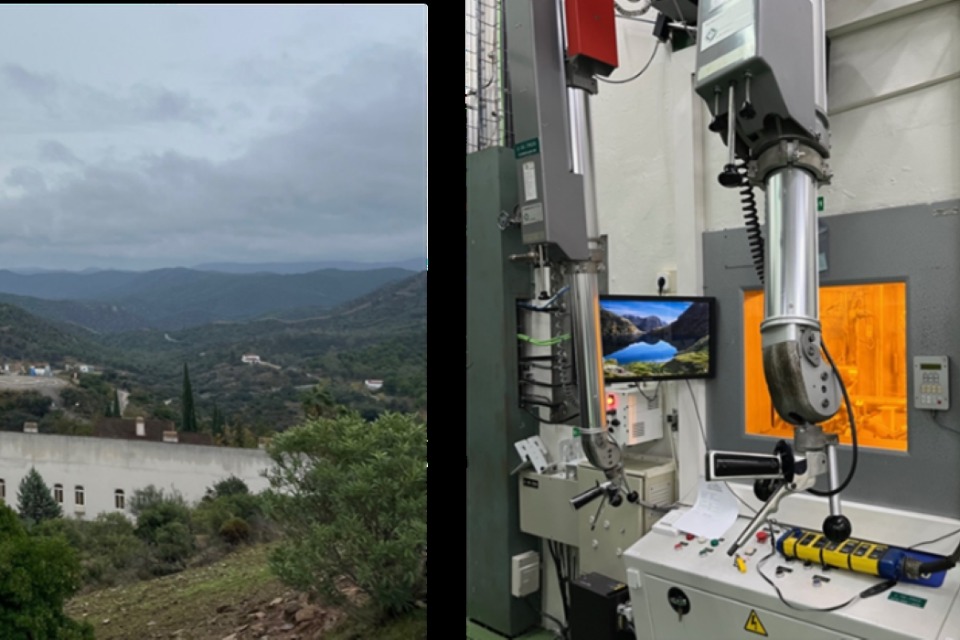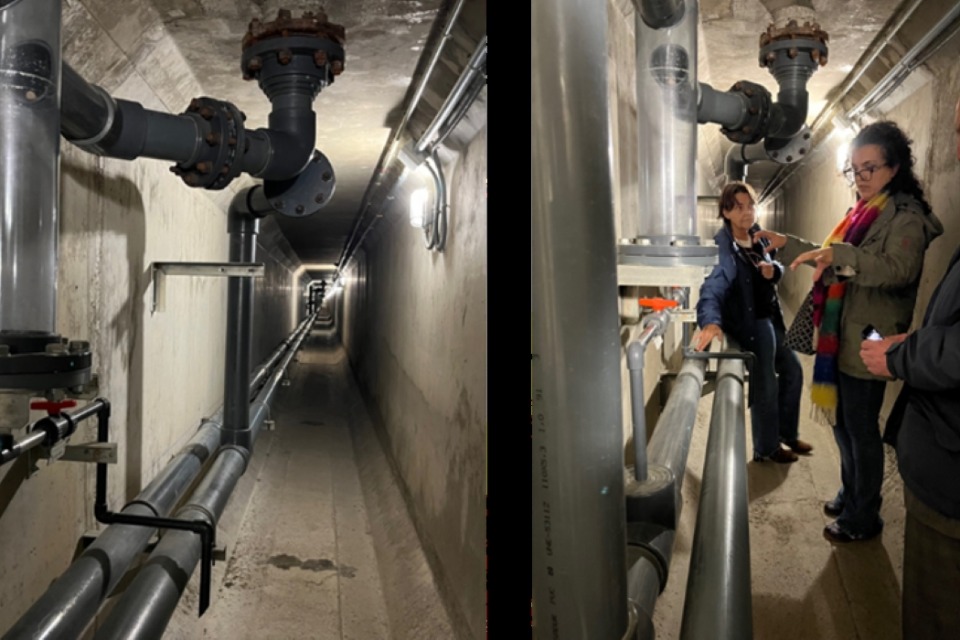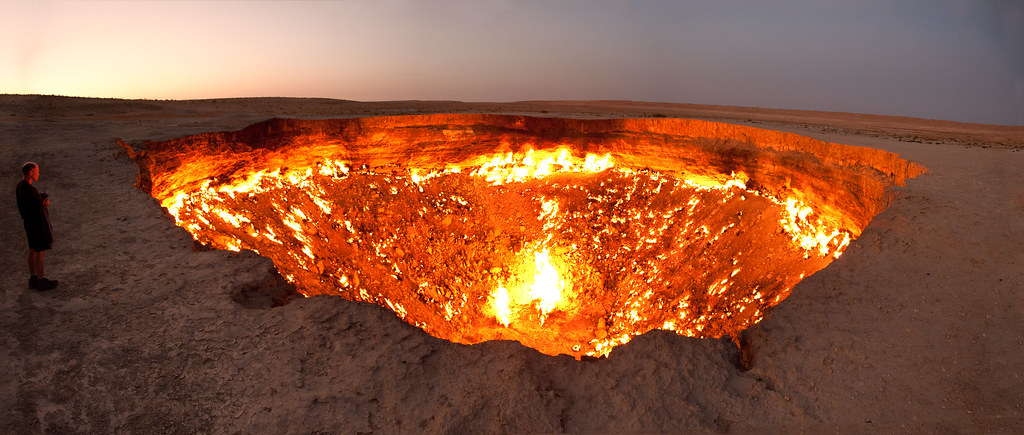Four Committee on Radioactive Waste Management (CoRWM) members travelled to Andalucia to visit the El Cabril low and intermediate level nuclear waste disposal facility.
The true extent of the 29 October floods on the Spanish regions of Valencia and Andalucia did not become immediately apparent, but the flood waters caused the death of over 230 people and was one of the deadliest natural disasters in Spanish history. On what became one of the most devastating weeks in history for Valencia and Andalucia, 4 CoRWM members travelled to Andalucia to visit the El Cabril low and intermediate level nuclear waste disposal facility. These sobering statistics added a pertinence to our visit.
Flooding events and 'extreme' weather - the torrential rain in Spain on 29 October brought a years' worth of precipitation in a single day- are increasing in frequency and highlight the pressing need for robust, zero carbon energy systems that can sustain our energy needs without causing environmental and human disaster. This contextual framing of our visit to the nuclear waste disposal site at El Cabril is important. We need to securely dispose of our nuclear waste without leaving a burden for future generations. Disposal must be safe in the short and long term from environmental change. This becomes increasingly pertinent if we are to use nuclear in a portfolio of energy choices to meet out net zero targets.
CoRWM were welcomed to Spain and the El Cabril site by Nuria Prieto Serrano from ENRESA (Empresa Nacional de Residuos Radiactivos S.A.). Nuria is Senior Technician working in the department of International Co-operation and Research and Development at ENRESA. She is a philologist and lawyer with over 20 years' experience in radioactive waste management and was an excellent guide and source of knowledge. We started our visit by sharing information on the countries respective nuclear waste disposal strategies and current progress.
Spain is currently decommissioning all their nuclear energy plants in the wake of a decision to discontinue nuclear energy production. Wastes described as very low, low and intermediate level wastes, in the Spanish categorisation of radioactive waste as described on the ENRESA website , can be disposed of at El Cabril. These wastes are similar to low and intermediate level wastes in the UK, but high-level wastes and some special wastes will need to be disposed of in a geological facility. Therefore, the process of designing and delivering a geological disposal facility is now starting in Spain.
Penny Harvey (CoRWM Deputy Chair) spoke about the work of CoRWM, and CoRWM's role in the management and disposal of nuclear wastes in the UK. The role of a body such as CoRWM was of interest to ENRESA, as Spain progresses towards developing its strategy for and delivery of a deep geological disposal facility.

Visitors centre displays showing the site layout (left) and canister types (right)
El Cabril is on a former uranium mine and it is this legacy that led to the first wastes being stored here. The old mining cottages are still on site. Now empty, they appear like a row of little white teeth in the landscape evidence of the complex nature of human involvement on the site and the ties between geology, energy, people and landscape. Nuria describes how a future siting of a deep geological disposal facility would be open and transparent with community engagement in the process. We reflect on the importance of the community engagement process in the UK and the time and effort it takes to do it well and to gain trust and respect. Aspects of heritage, place, peoples, combined with the geology and other logistics all need to come together to create the right environment for a geological disposal facility.
As ever, with such visits, time was short and there was much to discuss and see. We had a quick tour of the visitor's centre, which receives a staggering c.3,000 visitors/year; despite being many hours' drive from any centre of major population. The visitor's centre is a simple, clear and informative space with great views out onto the site. Our next stop was the watch tower, which affords fabulous views across the rolling Spanish countryside in which the El Cabril site is embedded. The watch tower is, as its name suggests, a security post; but not focused on risks such as terrorism threats that might first come to mind as a UK citizen. The watch tower's main function is fire watch, as forest fire is deemed the biggest risk to site safety, and there are helicopter pads and reservoirs built into the landscape ready for firefighting. This simple fact provokes thoughts of climate change, shifting weather patterns and the increased frequency of extreme events. Much of Spain had temperatures over 40 degrees in the summer of 2024. Risks to infrastructure are changing as weather patterns destabilise. In a region where fire is the highest risk to a nuclear waste disposal site, but has also just seen the worst floods in its history, managing waste carefully and predicting future scenarios is a must.

The view from the Watch Tower across the El Cabril site (left), and the Handling and Operations area (right).
The central operations room provided an insight into the control systems and monitoring. Viewed through a one-way window that cleverly can be come two-way if the operators allow, we glimpsed the complexities of the monitoring and evaluation systems. Here we also learnt the operational workflow from delivery of waste at the site through to disposal, with graphics and text combined with real site photography. Then Nuria walked us through the loading, handling, testing and monitoring areas. We also saw the transportation truck systems that bring waste to the site from different nuclear operators. Despite being only 4 members from CoRWM we brought expertise in siting and engagement, in geology, regulation, risk management, transport and disposal logistics, so there was much to discuss and see.

The fluid draining and sampling pipes beneath the El Cabril low and intermediate level waste vaults (left), and Nuria Prieto Serrano explaining the fluid sampling system (right)
The highlight was the disposal vaults themselves. Firstly, we were taken into the passageways below the completed low and intermediate level waste vaults to see the water sampling and analysis system. Although dry the system and monitoring is designed so that any fluid collected in the base of the silos can be drained and tested. The system allows testing of fluid from individual silos so that any issues can be isolated. Above ground large tents cover the operational very low-level waste disposal sites and layers of waste and barriers are stacked up to create the stores within each concrete silo. It is possible to walk out on top of these very low-level wastes and to see the waste and back-fill up close. Eventually the disposal areas will be landscaped. The tops of the rolling hills were removed to create the disposal areas, and these will be recreated when the vaults are full, returning the landscape to its past form. Or at least how it was most recently.
These aspects of time, change and expectation are interesting, always framed in the human timescale and often within a single generation or two, rather than anything close to geological (millions and billions of years) or even timescales of some radioactive decay (tens of thousands of years). The Valencia floods and the environmental and human disaster that ensued signal potentially rapid change on relatively short (human) timescales. We will need to learn to adapt and be resilient, and act collectively for the common good. Sharing best practice and understanding internationally is key, learning from each other's challenges and solutions. The timescales are both long and short and change is inevitable as we navigate our way to optimal nuclear waste disposal solutions.
With special thanks to Nuria Prieto Serrano, and ENRESA for hosting CoRWM's visit.






